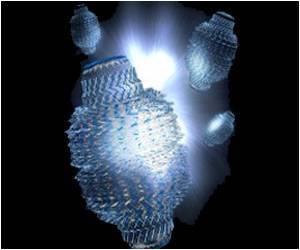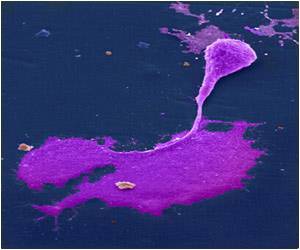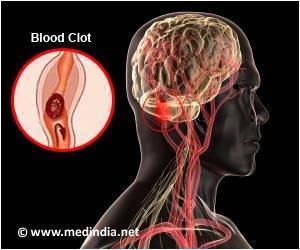A new study led by scientists has painted a clearer picture of the delicate arms race between the human immune system and a pathogen that seeks to infect and kill human cells.

The senior author of the paper, which appears online this week in Proceedings of the National Academy of Sciences, is Igor E. Brodsky, an assistant professor in the Department of Pathobiology at Penn Vet. He teamed with Penn Vet's Naomi H. Philip, Annelise Snyder, Meghan Wynosky-Dolfi, Erin E. Zwack, Baofeng Hu, Louise FitzGerald and Elizabeth A. Mauldin. Alan M. Copenhaver and Sunny Shin of Penn's Perelman School of Medicine were also co-authors.
The researchers set out to try to solve a seeming paradox. They knew that one way Yersinia bacteria attempted to evade immune response was by using a protein called YopJ to block a key immune signaling pathway in host immune cells, the NF-κB pathway. Activation of this pathway by microbial infection causes infected cells to release signaling molecules, called cytokines, which mobilize the immune system to fight off infection. Yet, despite this strategic blockade, Yersinia infections do lead to recruitment of immune cells and inflammation, and the infected cells die.
In addition, previous experiments showed that a mutant version of Yersinia containing a particularly potent form of YopJ was better than the normal bacteria at killing cells in culture but paradoxically worse at causing disease in animal infections.
"So that led us to the hypothesis that maybe cell death was actually a host cell response," Brodsky said.
In other words, the researchers wondered whether the immune cells were dying on purpose, as a way to alert neighboring cells to the presence of infection.
Advertisement
It was known that caspase-1 was important for a process known as pyroptosis, an inflammatory form of programmed cell death. This form of cell death also leads to cytokine release and inflammation. Caspase-8, on the other hand, is known to be important for apoptosis, a form of programmed cell death generally considered to be non-inflammatory.
Advertisement
While researchers knew that YopJ activity triggers both caspase-1 and caspase-8 to be processed, they didn't know how the pathways were structured and exactly what was required to lead to cell death.
By collaborating with Christopher Dillon, Patrick Fitzgerald and Douglas Green of St. Jude Children's Research Hospital and Andrew Oberst of the University of Washington, who had generated mice lacking caspase-8, the team showed that the activity of this enzyme was required for both YopJ-induced cell death and caspase-1 processing — the first time that anyone has demonstrated such a link. In addition, mice lacking caspase-8 were extremely sensitive to Yersinia infection, suggesting that caspase-8 was important to host defense.
"One thing that was really surprising was that even though these mice had very high bacterial burdens, their cells were not capable of producing inflammatory cytokines," Brodsky said. "What that suggests to us is that the activation of this cell death pathway is a potential way for cells that are infected to alert uninfected cells. We think coupling of caspases-8 and -1 in this setting allows for redirection of a non-inflammatory form of cell death to an inflammatory form of cell death."
The purpose of YopJ might not be to kill the cell, the researchers believe, but instead to simply prevent the cell from producing cytokines that lead to inflammation. Yet infected host cells subvert this bacterial strategy by undergoing an inflammatory form of cell death that spreads the word that an infection is present.
Brodsky suspects that Yersinia is not alone in trying to prevent host cells from "calling for help" by blocking cytokines. He said enhancing our understanding of how signaling pathways on both the microbial and host sides operate during infection could one day lead to improved antibiotic treatments..
In the future the researchers want to understand precisely how blocking the NF-κB pathway led to caspase-8 activation, triggering the cascade that leads to cell death.
Source-Eurekalert















